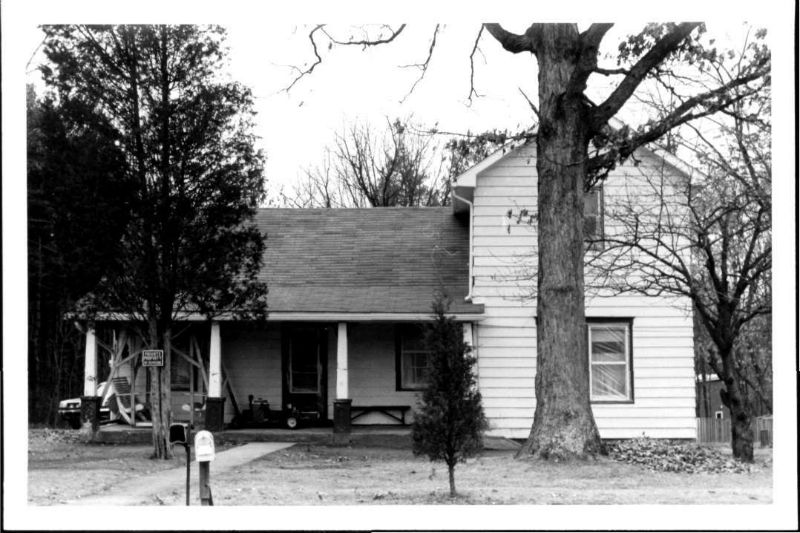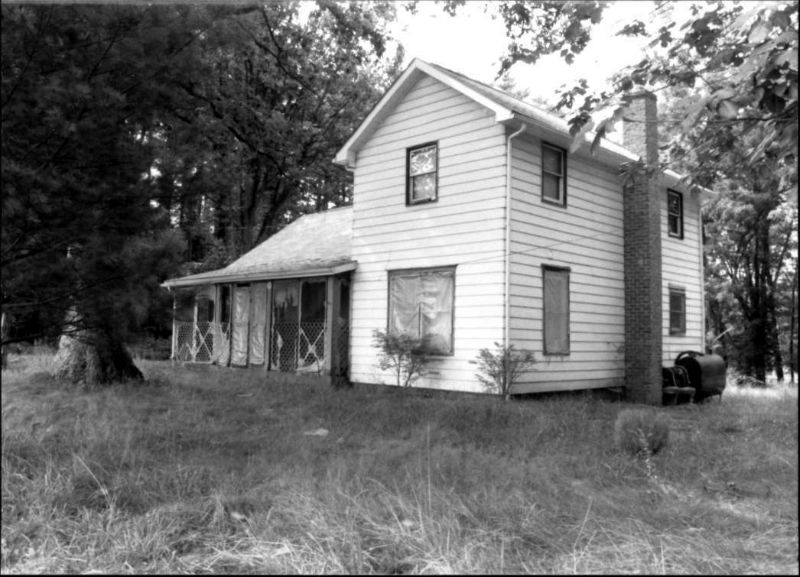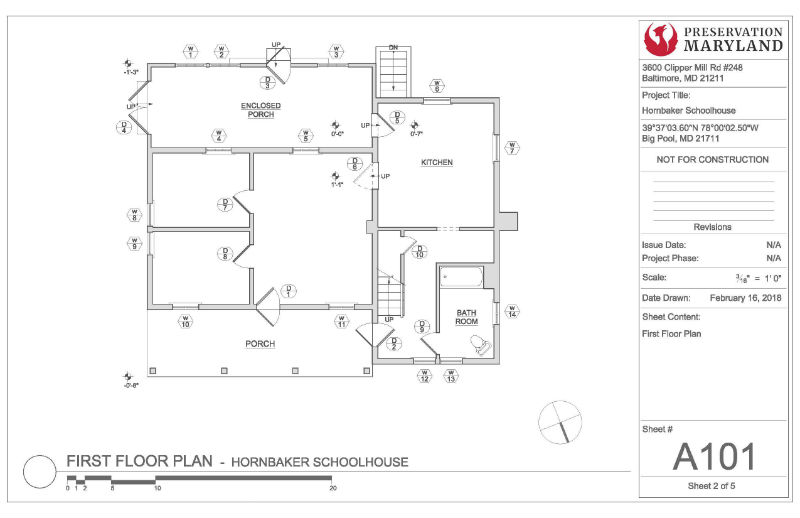As part of a year-long initiative to support the historic resources within Maryland State Parks, Preservation Maryland has teamed up with the Department of Natural Resources to document some of those most historic and unique properties in the State Parks. Recently, a team went to the Hornbaker House at Fort Frederick State Park.

Hornbaker House, 1998. Photo from Maryland Historical Trust.
BRIEF HISTORY
The Hornbaker House is a former school for African American children that was constructed at the turn of the 20th century. It predates the creation of Fort Frederick State Park as it was the property of Nathan Williams, an African American farmer, who owned much for the French and Indian War-era Fort Frederick. The property was later sold to the Washington County School Board by a member of the Williams family for use as a school. In fact, members of the Williams family taught at the school before it closed in 1914. It was later sold at an auction and converted into a residence — hence, Hornbaker House.
- Hornbaker House, 2000. Photo from Maryland Historical Trust.
- Hornbaker House, 2000. Photo from Maryland Historical Trust.
In 1973, the structure was included in the boundary of the State Park and was later included in the Resident Curatorship Program of the Department of Natural Resources. The Resident Curatorship program is an innovative program that offers reduced or free rent to residents that agree to repair and maintain the historic property. It’s a win-win program. Since the property was removed from the Curatorship program, it has not found a new use.
FIELD NOTES
The site visit in the winter of 2018 was to document the home and to investigate the evolution of the house over time. Floor plan measurements were taken of both the historic schoolhouse portion and the more modern section of the house. In addition to measurements, a schedule was created of the various window and door moldings to help trace the development of the historic portion of the site. It is hoped that by examining the floor plans and door and window schedule, ideas can be formed about which walls, windows, and features are original and when additions may have been added.






